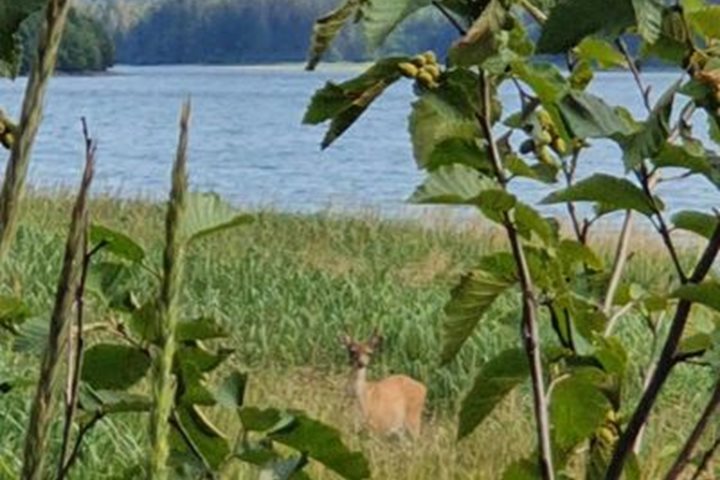Our beautiful floating home in Southeast Alaska, National Geographic Quest, entered Glacier Bay National Park during the early morning hours, and by 6:00 a.m. she was off Bartlett Cove. There we received on board a couple of special visitors, a park ranger and a Tlingit cultural interpreter that traveled with us all day long, and helped us appreciate this marvelous place even more. Glacier Bay National Park is truly a living laboratory of change and revival. The natural processes of glaciation, habitat succession, species dispersal, and others are clearly observed here, making for a most interesting place to visit and study.
Shortly after breakfast we arrived at South Marble Island, a small rocky islet that is home to a great variety of sea birds and Steller sea lions. The latter were the ones that greeted us with their calls and could be seen frolicking. As we approached the island, their pungent smell and robust bodies piled up on top of each other. The world’s biggest sea lion is getting well established in the bay and recently a few pups were born here. We also saw a few sea otters floating around, seemingly unconcerned about the much larger pinnipeds around them. But it was the abundant birdlife at South Marble Island that called our attention: lots of black-legged kittiwakes and glaucous-winged gulls, pelagic cormorants and common murres gave the place a great touch of life. We all had the chance to watch everyone’s favorite bird, the tufted puffin, as many of them were flying around or sitting in the water right next to our ship.
The light rain was no obstacle for us to find not one but five different brown bears. First one young adult bear was discovered foraging in the intertidal area looking for barnacles and turning over boulders hoping to capture small crabs and small fish. We were still watching the bear when a second one was spotted a short distance down the shoreline, and then a sow with two cubs. It was an easy decision and we went for the trio. We watched her lead the way along the water’s edge while her two cubs followed and imitated everything she did. And while she had no problems turning over big rocks, her cubs struggled to move small boulders with almost comical determination. What a wonderful chance we had to watch such wild creatures!
We eventually arrived at the northern portion of the bay and entered the John Hopkins Inlet; numerous harbor seals watched National Geographic Quest as we sailed by. The John Hopkins Glacier regaled us with its beauty and we were able to witness some calving that reminded us once again of how important it is to keep such wild natural places wild.







